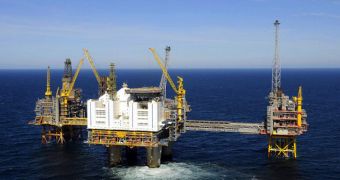Officials at the European Space Agency (ESA) announce that yet another of the materials its experts designed especially for the Ariane 5 heavy-lift rocket is about to enter the commercial sector.
The new material is an advanced kind of titanium, which comes accompanied by a special manufacturing technique as well, representatives from the organization add.
This particular type of titanium could be of great use particularly to the oil and gas industry, as it could be used to create new and more efficient offshore drilling tools.
The technology transfer will soon take place under ESA’s Technology Transfer Program. Adopting the new material becomes increasingly critical considering the widespread use of unmanned autonomous underwater vehicles (AUV) by the industry.
Over the coming years, this type of use will undoubtedly increase further, and so the fossil fuel industry is even now calling for new materials and production techniques to help out.
“Offshore and space activities both need innovative solutions, skilled people and technology with extreme qualities,” explains Odd Roger Enoksen.
“It is therefore natural to exchange knowledge and experience across these industries,” adds the expert, who is a former Norwegian Minister of Petroleum and Energy, and the current CEO of the Andoya Rocket Range.
The new type of titanium, called ‘Ti6-4’, is used by ESA to produce the highly-resistant hydrazine fuel tanks that equip its Ariane 5 rocket. The corrosion-resistant structure that is produced in this manner is also subjected to a technique called ‘hot gas pressure forming’.
One of the main problem the offshore drilling industry faces is the corrosion of various materials, due to the unforgiving action of waves and saltwater.
“The space industry and the oil and gas industry both work at the leading edge of what is possible from technologies in extremely harsh environments,” says Callum Norrie.
“Both benefit when new solutions are developed for space and then transferred to solve problems in the oil and gas industry. Valuable feedback as well as further technological developments could also lead to improvements in space,” adds Norrie, who is based at the ESA Technology Transfer Program Office.

 14 DAY TRIAL //
14 DAY TRIAL //